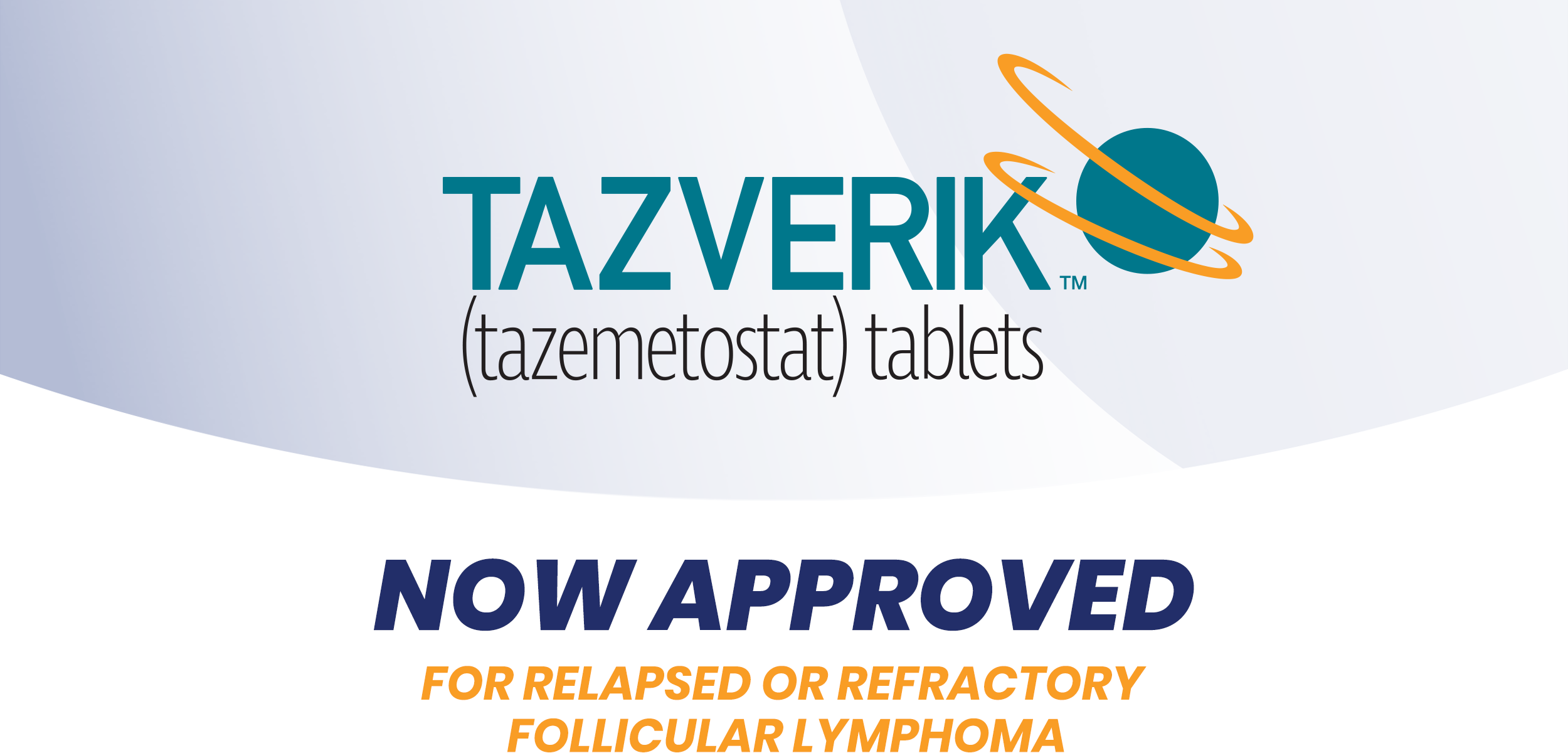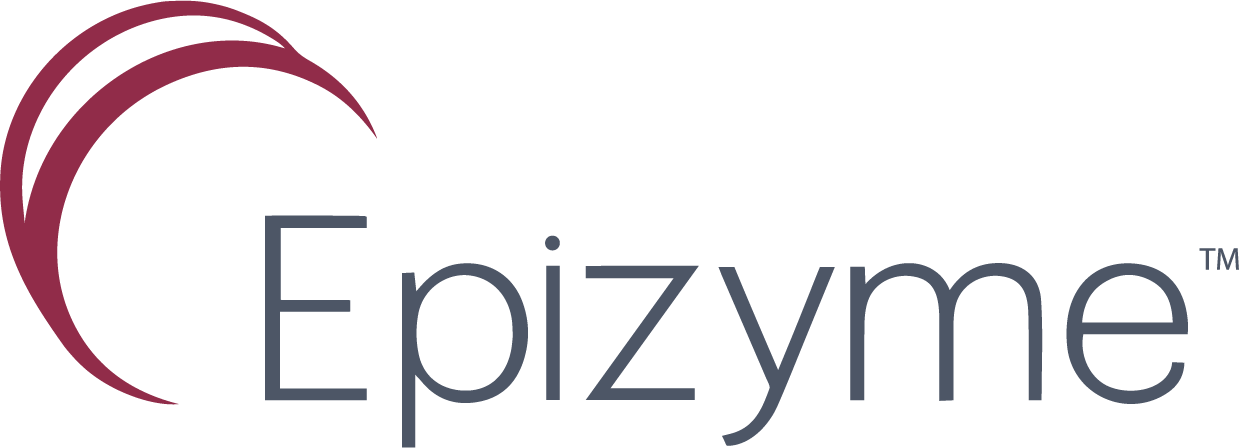|
From: OncLive <edigest@onclive.com>
Sent: <Variable Day of week, Month day, 2020 Time AM or PM>
To: <Variable attendee email address>
Subject: Reminder: TAZVERIK™ (tazemetostat) Launch Broadcast
No Images? Click here
|
|
|
|
|
Dear [Full Name],
This is a reminder that you have registered to view this Launch Broadcast
sponsored by Epizyme on a new treatment option for relapsed or
refractory follicular lymphoma. Thank you for your participation!
Program: TAZVERIK™ for the Treatment of Patients with Relapsed or Refractory Follicular Lymphoma.
TAZVERIK™ (tazemetostat) is indicated for the treatment of:
Adult patients with relapsed or refractory follicular lymphoma whose tumors are positive for an EZH2 mutation as detected by an FDA-approved test and who have received at least 2 prior systemic therapies. Adult patients with relapsed or refractory follicular lymphoma who have no satisfactory alternative treatment options.
These indications are approved under accelerated approval based on overall response rate and duration of response. Continued approval for these indications may be contingent upon verification and description of clinical benefit in a confirmatory trial(s).
Date: Thursday, August 13th at 5:00pm ET with Live Faculty Q&A Session
Time: Wednesday, August 19th at 5:00pm ET and 8:00pm ET
To view the broadcast, please click here.
Learn More about TAZVERIK™!
|
|
|
SELECTED IMPORTANT SAFETY INFORMATION
Warnings and Precautions
• Secondary Malignancies
TAZVERIK increases the risk of developing secondary malignancies, including T-cell lymphoblastic lymphoma, myelodysplastic
syndrome, and acute myeloid leukemia.
• Embryo-Fetal Toxicity
TAZVERIK can cause fetal harm. Advise patients of potential risk to a fetus and to
use effective non-hormonal contraception.
Please see Important Safety
Information below.
|
|
|
|
|
John M. Pagel, MD, PhD
Chief of Hematologic Malignancies
Center for Blood Disorders and Stem Cell Transplantation
Swedish Cancer Institute
|
|
|
|
John Burke, MD
Associate Chair, US Oncology
Hematology Research Program
Rocky Mountain Cancer Centers
|
|
|
|
Sandra Kurtin, PhD, ANP-C
Director, Advanced Practice Assistant Professor Clinical Medicine and Nursing
The University of Arizona and Arizona Cancer Center
|
|
|
|
|
|
|
|
|
|
IMPORTANT SAFETY INFORMATION
Warnings and Precautions
• Secondary Malignancies
The risk of developing secondary malignancies is increased following treatment with TAZVERIK. Across clinical trials of 729 adults who received TAZVERIK 800 mg twice daily, myelodysplastic syndrome (MDS) or acute myeloid leukemia (AML) occurred in 0.7% of patients. One pediatric patient developed T-cell lymphoblastic lymphoma (T-LBL). Monitor patients long-term for the development of secondary malignancies.
• Embryo-Fetal Toxicity
Based on findings from animal studies and its mechanism of action, TAZVERIK can cause fetal harm when administered to pregnant women. There are no available data on TAZVERIK use in pregnant women to inform the drug-associated risk. Administration of tazemetostat to pregnant rats and rabbits during organogenesis resulted in dose-dependent increases in skeletal developmental abnormalities in both species beginning at maternal exposures approximately 1.5 times the adult human exposure (area under the plasma concentration time curve [AUC0-45h]) at the 800 mg twice daily dose.
Advise pregnant women of the potential risk to a fetus. Advise females of reproductive potential to use effective contraception during treatment with TAZVERIK and for 6 months after the final dose. Advise males with female partners of reproductive potential to use effective contraception during treatment with TAZVERIK and for 3 months after the final dose.
Adverse Reactions
In 99 clinical study patients with relapsed or refractory follicular lymphoma receiving TAZVERIK 800 mg twice daily: Serious adverse reactions occurred in 30% of patients who received TAZVERIK. Serious adverse reactions occurring in ≥2% were general physical health deterioration, abdominal pain, pneumonia, sepsis, and anemia. The most common (≥20%) adverse reactions were fatigue (36%), upper respiratory tract infection (30%), musculoskeletal pain (22%), nausea (24%), and abdominal pain (20%).
Drug Interactions
Avoid coadministration of strong or moderate CYP3A inhibitors with TAZVERIK. If coadministration of moderate CYP3A inhibitors cannot be avoided, reduce TAZVERIK dose.
Avoid coadministration of moderate and strong CYP3A inducers with TAZVERIK, which may decrease the efficacy of TAZVERIK.
Coadministration of TAZVERIK with CYP3A substrates, including hormonal contraceptives, can result in decreased concentrations and reduced efficacy of CYP3A substrates.
Lactation
Because of the potential risk for serious adverse reactions from TAZVERIK in the breastfed child, advise women not to breastfeed during treatment with TAZVERIK and for one week after the final dose.
Please see full Prescribing Information
|
|
|
|
|
© 2020 Epizyme, Inc. All rights reserved.
TZ-FL-BR-20-0102
|
|
|
|
|
|
Onclive® – an MJH Life Sciences brand™
Copyright 2020 © Intellisphere, LLC
2 Clarke Drive, Suite 100
Cranbury, NJ 08512
Preferences | Unsubscribe
|
|
|







